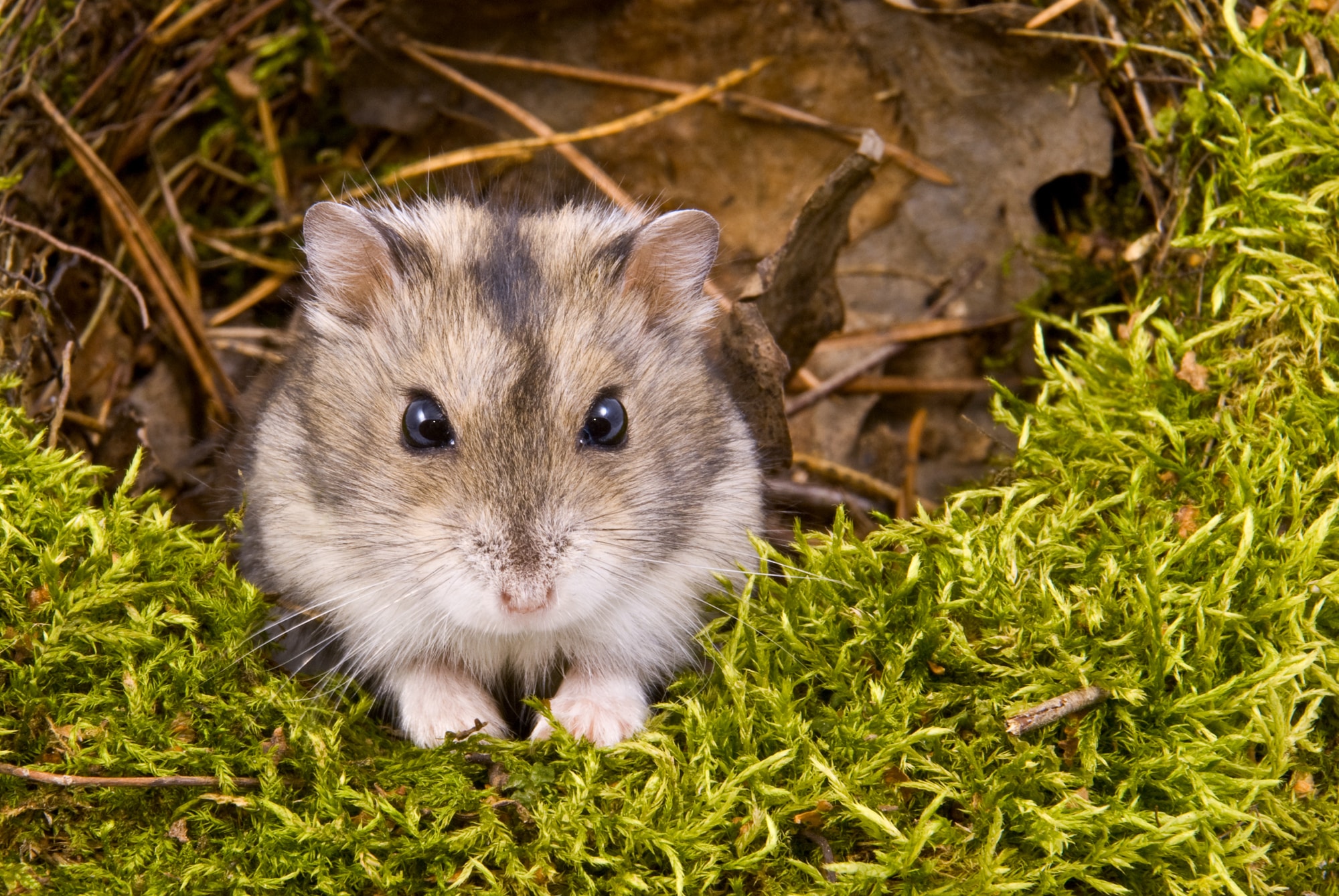There isn’t probably a single country in the world where tomatoes are not eaten. After all, they add a unique flavor to the food. So, it is not surprising that people add tomatoes to salads, pizzas, pasta, curries, sauces, etc. Since tomatoes are tasty and can be added to so many food items, you may be tempted to give one to your hamster too. But do you know if hamsters can eat tomatoes? Are tomatoes safe for hamsters? What are the health benefits? And what are the risks you should be aware of? Find out in this blog post.
- Tomato
- Nutritional content in tomatoes
- Can hamsters have tomatoes? Can tomato make your hamster sick?
- Different breeds of hamsters vs. tomato
- FAQ
- Can hamsters eat tomato leaves? Can hamsters eat tomato stems?
- Can hamsters eat green tomatoes?
- Can hamsters eat sun-dried tomatoes?
- Can hamsters eat tomato ketchup?
- Can hamsters drink tomato juice?
- What can happen if your hamster overeats tomatoes?
- Can hamsters eat tomato seeds?
- Which tomato should I buy for my hamster?
- Summary – Takeaways
Tomato
Before we find out if your hamster can eat tomatoes, let’s look at what tomatoes are and where they came from.
The tomato is the berry of the Solanum Lycopersicum plant. In botany, a fruit is something that contains seeds and develops from the ovary of a flowering plant. All other parts of the plant, like its roots, stems, and leaves, are considered vegetables. So, botanically speaking, tomato is a fruit. But for culinary purposes, it is regarded as a vegetable.
You may think that it isn’t a big deal if the tomato is considered a fruit or vegetable. But there was a time when it caused such confusion that the United States Supreme court had to step in. In 1893, the United States Supreme Court case Nix. v. Hedden, the supreme court ruled that imported tomatoes should be taxed as vegetables and not as fruits. After acknowledging that tomato is a botanical fruit, the court decided to rule in favor of the common practice of considering tomato as a vegetable (Source: LiveScience).
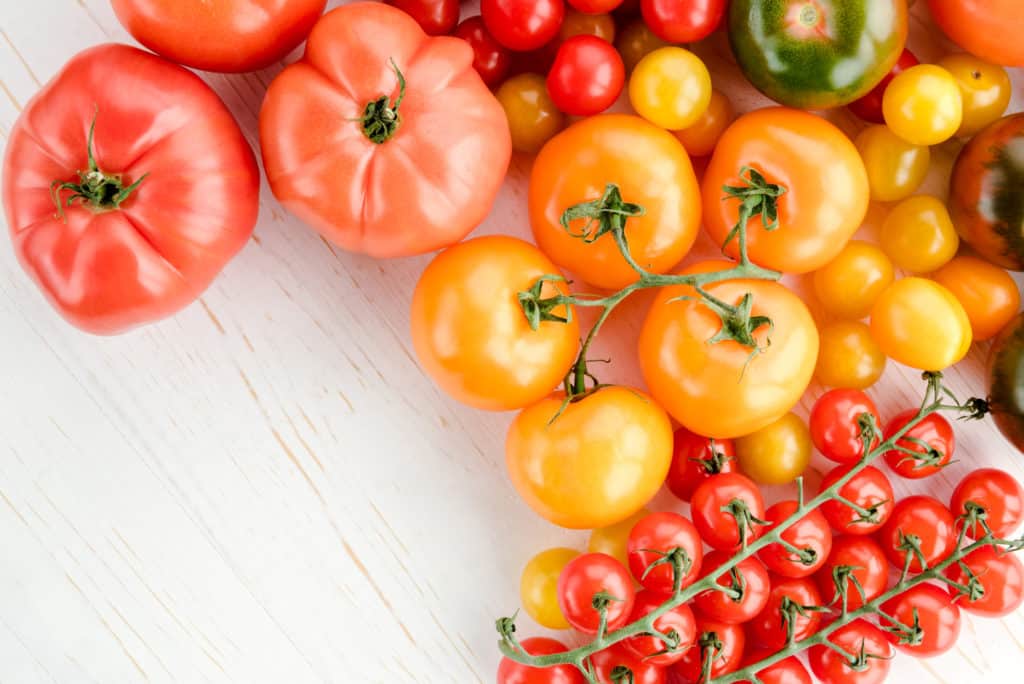
Origin
The wild tomato fruit originated in the Andes mountains in South America, probably in Peru and Ecuador. The indigenous people in Mexico were probably the first people who domesticated it. The Aztec name for the fruit was tomatl. The Spanish explorers then took the fruit to Spain and introduced it to Europe. The Spanish and Italians were the first Europeans to add tomatoes to their diet (Source: Britannica Encyclopedia). Today, tomato is used all around the world. It is a major component in many food items in hundreds of cuisines. The USA alone produces more than 16 million tonnes of tomatoes every year (as of 2015).
Nutritional content in tomatoes
Tomatoes contain a lot of important vitamins and minerals that your hamster’s body needs.
The nutritional content of 100g of tomatoes is listed below.
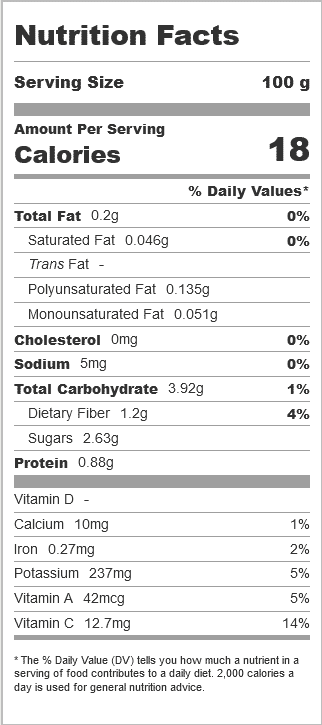
Can hamsters have tomatoes? Can tomato make your hamster sick?
Tomato is a vegetable that some breeds of hamsters can eat. It contains many essential nutrients and keeps your pet hamster healthy. Some of its health benefits are listed below:
Health Benefits
1. Tomato contains vitamin C, vitamin K, and vitamin B9. Vitamin C is essential for the body. It helps the tissues in the body grow, develop, and repair themselves. Vitamin C also helps the body absorb iron, heal wounds, form collagen, and maintain bones, cartilage, and teeth. Vitamin K is another essential vitamin. It plays a major role in blood clotting and helps the body produce healthy bone tissues. Vitamin B9 is needed for cell function and normal tissue growth.
2. Free radicals are molecules that are highly unstable. They need electrons to become stable. So, they steal these electrons from body cells, membranes, and DNA. This causes irreparable damage to the body, like accelerating the aging process and even causing cancers. But the creation of free radicals cannot be prevented because they are also produced in the body when cells combine oxygen and food molecules to produce the energy the body needs to sustain. But they can be neutralized by antioxidants, which provide the electrons the free radicals need. By doing so, they protect the body from damage. Tomato contains a variety of antioxidants like lycopene, naringenin, beta-carotene, and chlorogenic acid.
3. Lycopene is the antioxidant that gives the tomato its red/pink color. The redder the tomato, the higher the content of lycopene. Lycopene is found in high concentrations in the skin of tomatoes. Various studies indicate that lycopene could be effective against stomach, lung, and prostate cancers (Source: PubMed). Experiments on male rats show that lycopene acts as a pain reliever and might have the same effect as Ibuprofen (Source: ResearchGate). Lycopene also increases the levels of good cholesterol in the body and reduces the bad cholesterol levels (Source: PubMed). Lycopene and the other compounds present in tomatoes can also regulate blood pressure (Source: WebMD). Thus, tomatoes can protect your hamster from cardiovascular diseases.
4. Naringenin is a chemical compound that is highly beneficial to your hamster’s body. It possesses antioxidant, anti-inflammatory, anti-carcinogenic, and antiapoptotic characteristics. Antiapoptotic chemicals are chemicals that inhibit apoptosis in cells. Apoptosis is a process in which the cells in a multicellular organism die due to the changes that occur within them or due to the signals from nearby cells (Source: Wikipedia). It is a highly regulated and controlled process that usually benefits the organism. For example, when an offspring is inside its mother’s stomach, the separation of toes occurs because the cells between them undergo apoptosis. However, excessive apoptosis can lead to atrophic-nerve and muscle diseases (Source: Wikipedia). (Remember the Amyotrophic lateral sclerosis that Stephen Hawking suffered from?) But naringenin acts as an antiapoptotic and inhibits uncontrolled apoptosis (Source: PubMed). Thus, naringenin can protect your hamster from cancer, neurodegenerative disorders, rheumatologic disorders (autoimmune, inflammatory disorders, where one’s own immune system attacks the bones, joints, and other organs), etc.
5. Studies show that chlorogenic acid can reduce blood pressure in hypertensive rats (Source: PubMed). So, they can reduce the blood pressure of your hamster.
6. Tomato contains sufficient amounts of potassium and a small amount of iron. Potassium helps move nutrients into cells and waste products out of cells. It also plays an important role in improving cardiovascular health by reducing blood pressure to healthy levels. Iron is required for the creation of proteins like hemoglobin and myoglobin, which transport oxygen from the lungs to other parts of the body.
7. 95% of tomato is just water. So, it keeps your hamster hydrated for a long time.
8. It is a low-fat food that contains small amounts of sugars and a small amount of dietary fiber.
Risks
1. Tomatoes are acidic. So, feeding tomatoes in excess could cause digestive tract problems such as heartburn or acid reflux for your hamster because of the excess gastric acid. It could also cause diarrhea which can become fatal as it leads to dehydration.
2. Tomatoes contain oxalates. So, eating excess tomatoes could cause kidney stones and other kidney-related issues.
3. Tomato does not contain as much sugar as some other fruits. But if your hamster eats tomatoes too often, the sugar content and acidic content in tomatoes can add up over time. This might cause problems like obesity, diabetes, and diarrhea.
4. Every year, the EWG (Environmental Working Group) compiles a list of fruits and vegetables that are most contaminated with toxic pesticides. This list is called the Dirty Dozen. Tomato is one of those vegetables that has been on this list for more than five years in a row. So, they are laden with pesticides. If you don’t wash the tomato properly before feeding it to your pet hamster, he might end up getting poisoned.
Different breeds of hamsters vs. tomato
Different hamster breeds differ significantly in size. So, the amount of tomatoes that a hamster can eat depends on his breed.
Can Chinese dwarf hamsters eat tomatoes?
Chinese dwarf hamsters, as the name implies, are one of the smallest breeds of hamsters. So, their digestive systems may not be able to handle the acidic content in tomatoes. Even though eating a small piece of tomato once a month may not cause any significant problems, if a dwarf hamster eats tomato regularly, he might develop digestive issues like bloating and diarrhea. So, it is better not to give any tomatoes to your dwarf hamster (Source: Petsy). Instead, you can give your hamster other food items like berries (Recommended reading: Can hamsters eat blueberries?), nuts (Recommended reading: Can hamsters eat almonds?), etc.
Can Campbell dwarf hamsters eat tomatoes?
No, Campbell dwarf hamsters should not eat tomatoes as it might cause digestive issues.
Can Russian dwarf hamsters eat tomatoes?
Russian dwarf hamsters, also known as Winter White hamsters, are small hamsters. So, their digestive systems may not be able to handle the acidic content of tomatoes. So, it is wise to not give any tomatoes to your dwarf hamster.
Can Roborovski hamsters eat tomato?
Robo hamsters are also dwarf hamsters. Indeed, they are the smallest species of hamsters. So, their digestive systems cannot handle the acidic content in tomatoes that well. But when compared to other pet dwarf hamsters, they are more active, and hence, can tolerate more sugar content in their diet. So, they can eat tomatoes, but only as a rare treat. You can give them a small piece of tomato, around half a teaspoon, every fortnight.
Can Syrian hamsters eat tomatoes?
Syrian hamsters are the largest breed of hamsters. So, they can eat half a teaspoon of tomato every week.
FAQ
Can hamsters eat tomato leaves? Can hamsters eat tomato stems?
No, you should never give tomato leaves or stems to your hamster. The green parts of the tomato plant, namely its leaves, stems, and flowers, contain an alkaloid called solanine. In the gastrointestinal tract of hamsters, this chemical is converted into a toxic substance called tomatidine, which can cause diarrhea, bloating, and stomach pain for your hamster (Source: Vet explains pets).
Can hamsters eat green tomatoes?
For the same reason above, unripe green tomatoes should never be fed to hamsters.
Can hamsters eat sun-dried tomatoes?
Tomatoes are made up almost 95% of water. So, they contain a decent amount of sugars and minerals like potassium. But the amount of water content in sun-dried tomatoes is significantly lower. On the other hand, the concentration of sugars and potassium is higher. You can find a comparison of the nutritional content of 100g of normal red tomatoes and sun-dried tomatoes below.
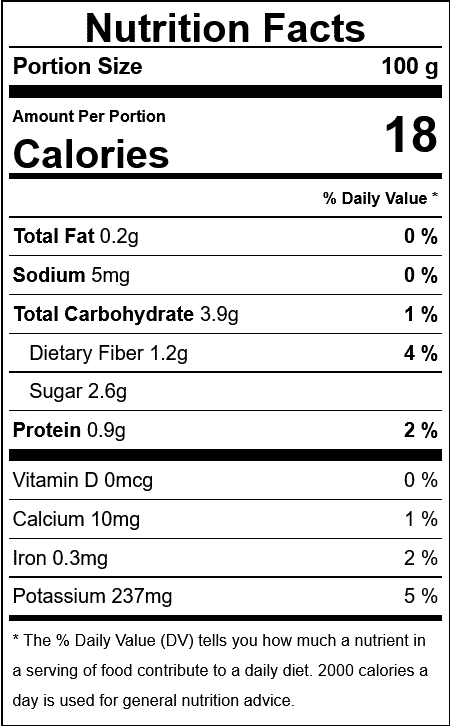
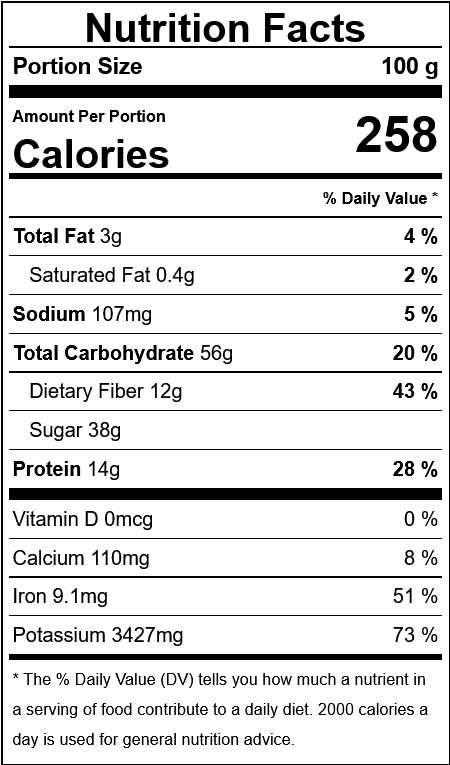
As you can see, the amount of sugars and minerals in sun-dried tomatoes is almost ten times more than those of the same weight as normal tomatoes.
High-sugar content in sun-dried tomatoes can make your hamster obese or diabetic.
Potassium is a mineral that benefits your hamster’s body greatly. However, when taken in excess, it can lead to a condition called Hyperkalemia. It occurs if the cells in the body release too much potassium or if the kidney fails to remove excess potassium from the body (Source: WebMD). Hyperkalemia could cause tiredness, muscle weakness, and even paralysis. It could also increase heart rhythms and cause chest pain.
So, your hamster should not eat sun-dried tomatoes.
Can hamsters eat tomato ketchup?
No, hamsters should not eat tomato ketchup. This is because the amount of sodium in ketchup is several times higher than in a fresh tomato. High sodium content in your hamster’s body could cause a condition called Hypernatremia. Some of its symptoms are:
1. Drinking a lot of water – When the sodium content in blood increases, the body starts pulling water from the cells to dilute it. Therefore, your hamster will end up getting dehydrated. As a result, he would feel excessive thirst and might start drinking a lot of water. Your hamster might also feel fatigued, lethargic, or confused.
2. Muscle-related problems – A right amount of sodium is required for the proper functioning of muscles and nerves. But too much sodium can result in twitching and spasms (Source: Healthline).
3. Brain-related problems – To dilute the increased sodium levels in the blood, the body starts pulling water from the cells. As a result, the amount of water in blood increases, which might cause a build-up of fluid in the brain. This could lead to coma, and in extreme cases, death.
4. Other symptoms – nausea, vomiting, loss of appetite, and kidney damage (Source: Harvard).
So, as you can see, feeding tomato ketchup to your hamster can cause a multitude of problems. In extreme cases, your hamster could even fall into a coma and die. So, never give tomato ketchup to your hamster.
Can hamsters drink tomato juice?
No, hamsters should never drink tomato juice. This is because tomato juice (or any other juice for that matter) could contain more sugars. So, it can cause obesity and diabetes in your furry friend.
What can happen if your hamster overeats tomatoes?
Tomatoes are rich in oxalates, and oxalates could prompt the collection of calcium in the body (Source: Medikoe). So, if your hamster eats too many tomatoes regularly, he could get kidney stones or other kidney-related issues. If your hamster already has kidney problems or kidney stones, you should avoid tomatoes altogether.
Can hamsters eat tomato seeds?
For the same reason mentioned above, tomato seeds can be dangerous for hamsters that already have kidney problems. If your hamster doesn’t have a history of kidney-related issues, then he can eat tomato seeds in moderate amounts.
Which tomato should I buy for my hamster?
When tomatoes are ready to become ripe, they naturally release a gas called Ethylene (C2H4). This gas helps them ripen and turn red. Only then, after they have ripened, should they be plucked from the tomato plant.
However, at times, tomatoes have to travel long distances from the farm to the market, which might take a few weeks. If they are plucked only after they ripen, they might go bad during the travel. Therefore, producers often pick tomatoes when they are still green. Then, during the travel, they spray Ethylene gas on these tomatoes (Source: Chef’s garden). In a plant, tomatoes release Ethylene gas only when they are ready to ripen. But in a truck, Ethylene gas is sprayed on tomatoes when they are not ready to ripen. So, while the artificial Ethylene can make the tomatoes turn red, it cannot actually ripen them. That is why the tomatoes in the supermarket might look red but won’t feel soft when you press them.
If you feed such a tomato to your hamster, you run the risk of giving an unripe tomato to your hamster. To avoid such a risk, buy tomatoes from a local farmer. Local farmers pluck the tomato only after they ripen since the tomato doesn’t have to travel long distances. So, if you want to buy a tomato for your hamster, make sure that you buy it from your local market.
You should also wash the tomato in running cold water to get rid of any traces of pesticides.
Summary – Takeaways
Tomato contains many essential vitamins and nutrients and offers many health benefits.
1. It contains vitamin C, vitamin K, and vitamin B9. Your hamster’s bones, teeth, and cartilage can benefit from these vitamins.
2. It contains antioxidants like lycopene, naringenin, beta-carotene, and chlorogenic acid. They protect your hamster from cancer and cardiovascular diseases.
3. Tomato contains potassium and iron. These minerals keep your hamster’s heart healthy and help carry oxygen from the lungs to other parts of the body.
4. Tomato comprises 95% of water. So, it keeps your hamster hydrated throughout the day.
Even though tomato offers so many health benefits, its acidic content makes it unsuitable for smaller breeds of hamsters like dwarf hamsters. But the bigger breeds of hamsters can eat moderate amounts of tomato occasionally.
How to give tomatoes to hamsters?
1. Buy ripe tomatoes from local farmers.
2. Wash the tomato in running cold water to wash off any traces of pesticides.
3. Cut the tomato into small pieces to avoid choking.
4. Watch out for any changes in behavior (fatigue, lethargy, excessive thirst for water, diarrhea, etc.). If your hamster shows any such behavior, consult a veterinary doctor immediately.

